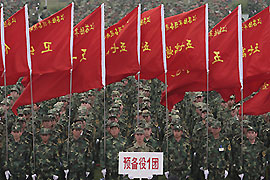China: Country profile
World’s most populous nation has one of the longest documented civilisations.
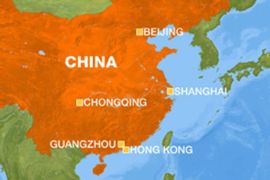
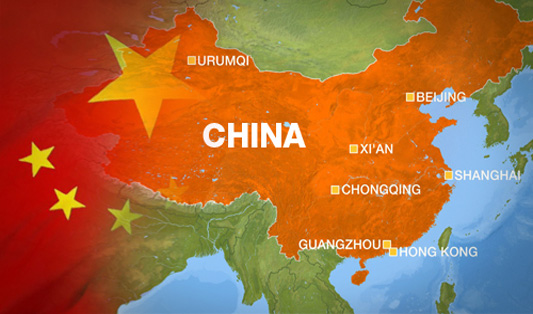 |
China’s unique identity lies in its longevity and resilience as a distinct unit, despite periods of civil unrest, famines, military defeats, and foreign occupation that have engulfed the country.
 |
|
Hu Jintao was named president |
In the initial decades after the communist takeover in 1949, China’s economy stagnated.
But since the introduction of the so-called “open door policy” in 1980s China has transformed itself into an industrial powerhouse and the world’s fastest-growing economy.
Keep reading
list of 4 itemsBiden labels Japan and India ‘xenophobic’ along with China and Russia
KFC Malaysia temporarily closes outlets amid Gaza boycott
Turkey says it halts trade with Israel over Gaza aid access
Internationaly China’s growing wealth and appetite for natural resources – especially oil – has given it increasing diplomatic clout on the world stage.
But China has had to balance its economic growth with concerns over the enviroment, with pollution and dessertification becoming increasing problems as cities and industries expand rapidly.
On the domestic front, worries over the country’s growing wealth gap, unemployment and unrest over corruption are fast becoming the biggest challenges facing the country’s rulers.
POLITICS
According to the latest version of the constitution, adopted in 1982, the People’s Republic of China is a “socialist state under the people’s democratic dictatorship”.
| Who’s who |
|
President and chairman of CPC: Hu Jintao Prime minister: Wen Jiabao Foreign minister: Li Zhaoxing |
Effectively this means that China is a one-party state ruled by the Communist Party of China (CPC), although there are other “democratic parties” which are represented at annual meetings of the country’s legislature.
Since March 2003, the country’s president has been Hu Jintao. He also holds the post of chairman of the CPC.
Since his appointment Hu has pledged to tackle corruption and given warning of the dangers posed by the fast-growing rural-urban wealth gap.
However, he has firmly rejected introducing any Western-style political reforms to China, saying that this would lead the country down a “blind alley”.
To date the only slight moves toward political liberalisation have been the opening of elections at the town and village levels.
The government retains tight control of the country’s media while online activity is also tightly regulated. Many websites deemed unsuitable are blocked by government-controlled internet service providers. An internet police force, reportedly numbering several thousand, keeps tabs on activity deemed against the national interest.
GEOGRAPHY
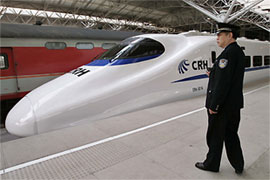 |
| A new bullet train systems helps commuters to cover the country’s vast expanse [Reuters] |
Stretching for more than 5,000 km from the deserts and mountains of Central Asia to the Pacific Ocean, China covers a vast range of landscapes.
Chinese territory includes the highest point on Earth, at the summit of Mount Everest, to the planet’s second-lowest point in the Turpan Basin, in the deserts of the country’s northwest.
The bulk of the population is concentrated in the eastern half of the country, home to China’s largest cities and its most fertile land.
China borders directly with 14 countries.
Its land frontier is about 20,000 km in length, and its coastline extends for some 14,500 km.
Area (Including Manchuria and Tibet): 9,596,960 sq km
SOCIETY
Population: 1,321,851,888 (2007 est)
Growth rate: 0.6 per cent
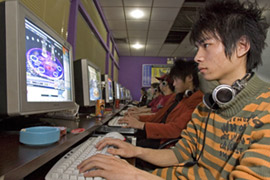 |
| There are an estimated 137 million internet users in China [EPA] |
Languages: Standard Chinese (Mandarin/Putonghua), Yue (Cantonese), Wu (Shanghainese), Minbei (Fuzhou), Minnan (Hokkien-Taiwanese), Xiang, Gan, Hakka dialects, minority languages
Religions: Officially atheist; Daoist (Taoist), Buddhist, Christian 3-4 per cent, Muslim 1–2 per cent
Ethnic diversity: Han Chinese 91.9 per cent, Zhuang, Uighur, Hui, Yi, Tibetan, Miao, Manchu, Mongol, Buyi, Korean, and other nationalities 8.1 per cent
Officially the government recognises 56 distinct ethnicities within China’s borders.
Literacy rate: 86 per cent
ECONOMY
China now has the world’s fastest-growing economy and is on track to become the biggest consumer of energy and natural resources – as well as the biggest polluter.
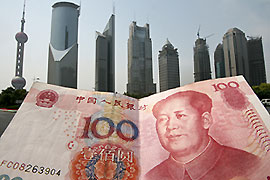 |
| China has the world’s fourth largest economy [AFP] |
The country’s role in world trade has steadily grown since the late 1970’s, when the government, headed by reformer Deng Xiaoping, decided to open China’s door to the global economy.
Despite being officially a communist country, privatisation of state-owned industries means that currently about three-quarters of the national economy is held in private ownership.
China’s foreign trade has since grown more quickly than its gross national product (GNP).
The government’s decision to let China be used by Western firms as an export platform is making the country an increasingly competitive threat to its regional neighbours such as South Korea, Singapore, and Malaysia.
Currency: China Yuan or Renminbi (CNY) – 1 USD = (app) 7.64 CNY
Natural resources: coal, iron ore, petroleum, natural gas, mercury, tin, tungsten, antimony, manganese, molybdenum, vanadium, magnetite, aluminum, lead, zinc, uranium, hydropower potential (world’s largest).
Major industries: mining and ore processing, iron, steel, aluminum, and other metals, coal; machine building; armaments; textiles and apparel; petroleum; cement; chemicals; fertilisers; consumer products, including footwear, toys, and electronics; food processing; transportation equipment, including automobiles, rail cars and locomotives, ships, and aircraft; telecommunications equipment, commercial space launch vehicles, satellites.
GDP: $2.512 trillion (2006 est)
Real growth rate: 10.5 per cent (2006 est)
China’s government has set 8 per cent as the growth target for 2007 but the central bank forecasts growth at 9.8 per cent and the World Bank says 10.4 per cent.
MILITARY
|
|
|
China has the world’s largest |
China has the world’s largest standing military and since 1949 has fought wars with South Korea, India and Vietnam.
Nuclear forces: China detonated its first atomic weapon in 1964.
Since then it has developed thermonuclear weapons (hydrogen bombs) and a neutron bomb.
China is thought to have about 400 strategic and tactical nuclear weapons, and stocks of fissile material sufficient to produce a much larger arsenal.
Military budget: $45 bn (2007 est)
Army size: 2.3 million troops
